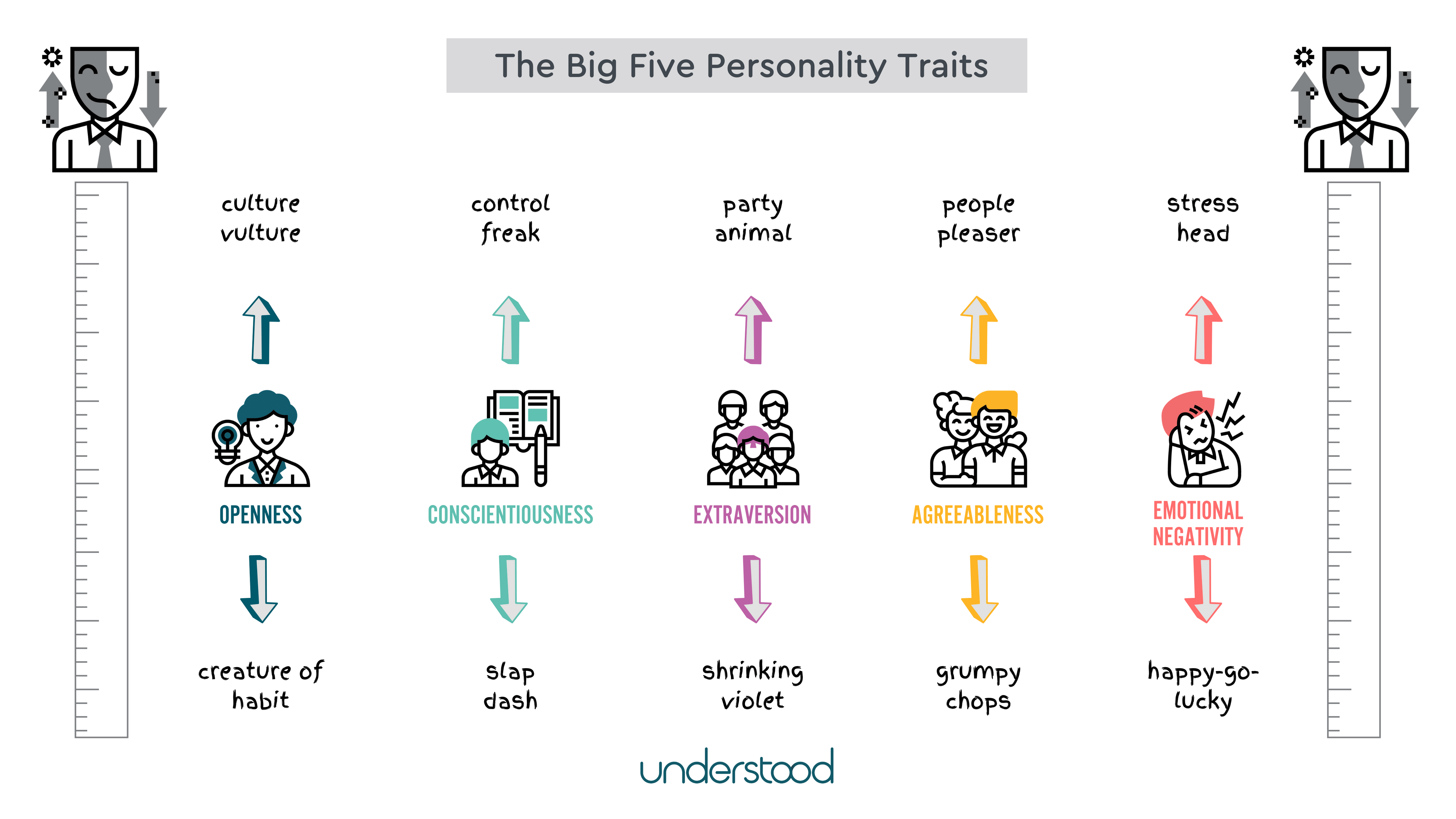
Changing behaviour with the Big Five: Give your employees a proper understanding of personality
By Carolyn Quainton in Behaviour, Emotional Intelligence, Inspiration, Personality, Resilience, Training
Understanding personality often marks the first step towards lasting behaviour change. Yet with countless tests and questionnaires available, it’s easy to feel overwhelmed when choosing a personality model that truly delivers value.
The Myers-Briggs Type Indicator (MBTI) remains widely used, especially in large organisations. However, many experts in personality psychology struggle to understand its enduring appeal. Despite its popularity, MBTI falls short in key areas that matter for real development.
Psychologist Brian Little, in his book Me, Myself and Us, highlights two major flaws in the MBTI model:
Low reliability – the likelihood of receiving the same profile across multiple assessments is weak.
Limited validity – the MBTI lacks the robust research foundation that underpins more advanced models.
Why does MBTI still dominate workplace personality profiling?
According to Little:
It’s easy and enjoyable to take – he critiques the ‘pizza delivery speed’ of its results, which contrasts sharply with the nuanced understanding needed for genuine personality insight.
Its branding gives a false sense of professionalism – MBTI merchandise and jargon create an illusion of credibility.
People identify with it easily – the model avoids ‘bad’ types, encouraging users to wear their profiles like a badge of honour.
While MBTI can spark useful conversations and initial self-reflection, it oversimplifies. If you’re going to invest in personality development in the workplace, why not use a model that genuinely supports long-term growth?
At Understood, we believe that the Big Five is a more insightful way of measuring personality. These five major traits cover the diverse ways we differ: Openness, Conscientiousness, Extraversion, Agreeableness and Emotional Negativity.
Why choose the Big Five?
At Understood, we champion the Big Five personality traits assessment as a more meaningful and scientifically grounded approach to understanding human behaviour. The Big Five framework measures five core traits: Openness, Conscientiousness, Extraversion, Agreeableness and Emotional Negativity (commonly known as Neuroticism).
Here’s why we believe it’s the gold standard for workplace personality development:
Scientifically sound – researchers across the globe recognise the Big Five as the most reliable model for understanding personality.
Culturally adaptable – this model has been successfully applied in multiple languages and cultures.
Non-restrictive – unlike MBTI, it doesn’t classify people into rigid types; instead, it views personality as a spectrum.
Empowering – understanding your Big Five profile can improve life satisfaction, health outcomes, and overall achievement.
Mental health insight – by exploring Emotional Negativity, individuals can better understand their responses to stress, anxiety, or low mood, opening doors to meaningful resilience and stress management training.
Relevant to modern workplaces – this model supports more nuanced insights into behaviour, paving the way for more personalised psychometric profiling for employees.
Understanding personality influences
If you’ve already introduced MBTI in your business and seen benefits such as increased self-awareness and emotional intelligence, that’s a positive start. But are your people getting the tools they really need?
Do they fully understand how their personality influences emotional wellbeing, motivation, and decision-making? Can they use these insights to strengthen resilience and communicate more effectively?
A recent Forbes article questioned the “mysterious popularity of the meaningless MBTI,” describing how it gives companies “the comforting illusion of understanding something important about human complexity.”
But the truth is, your people are complex – and they deserve more than a colour, a four-letter acronym, or a neat category.
 At Understood, our emotional intelligence training integrates the Big Five with practical applications for everyday work life. We offer interactive, accessible sessions for all levels – from front-line staff to the executive team. Through leadership personality profiling, team personality dynamics, and tools for improving workplace communication with EQ, we help your organisation grow from the inside out.
At Understood, our emotional intelligence training integrates the Big Five with practical applications for everyday work life. We offer interactive, accessible sessions for all levels – from front-line staff to the executive team. Through leadership personality profiling, team personality dynamics, and tools for improving workplace communication with EQ, we help your organisation grow from the inside out.
Talk to us, explore our website, read our blog, and follow us on LinkedIn to learn more and discover ways to grow a more successful business.


